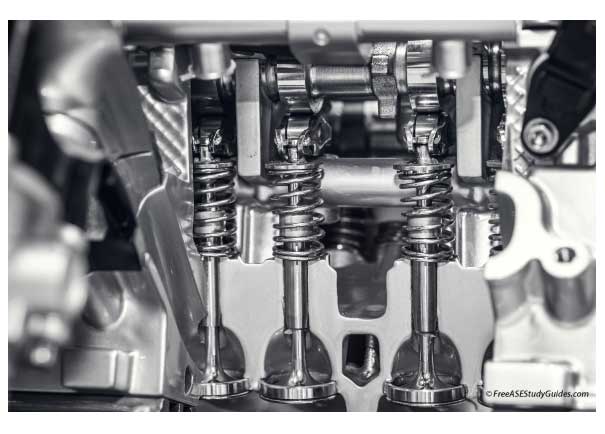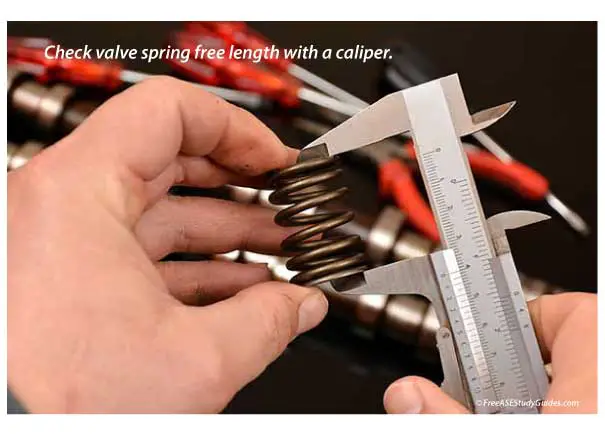Valve Spring Inspection

Inspect the valve springs before installing them on the cylinder head. Valve springs are made from different metals, depending on the engine. There are several designs; some include a damper to reduce valve train vibration. Others are variable springs that change the distance in the space between the coils. Dual springs have a smaller spring located inside the larger one. This spring set dampens and reduces vibrations.
A weak or worn valve spring results in valve float. Valves open and close at incredible speeds; a valve spring must be able to endure these extreme conditions. Valve float can result in damage to other components in the valve train.

Use a square and a flat surface to check valve spring squareness. Rotate the valve and make sure all the coils contact the square as it is rotated. A feeler gauge can be used to measure tolerance. Check the manufacturer's manual for any specifications or special procedures. Notice the space between the top coil and the square.
Valve Spring Free Length

Check valve spring free length with a caliper. Check the valve springs installed height from the base or pocket in the head to the bottom of the retainer. If this height is excessive, add the appropriate shim to bring the spring back to its proper tension. Any short springs (~1/16 inch) should be replaced. Tension can be checked with a valve spring tester.